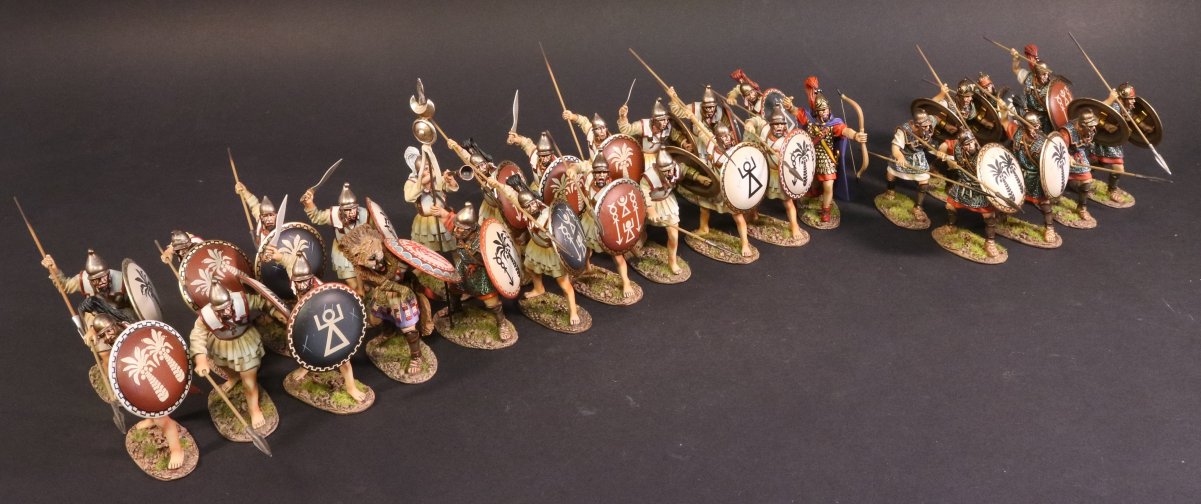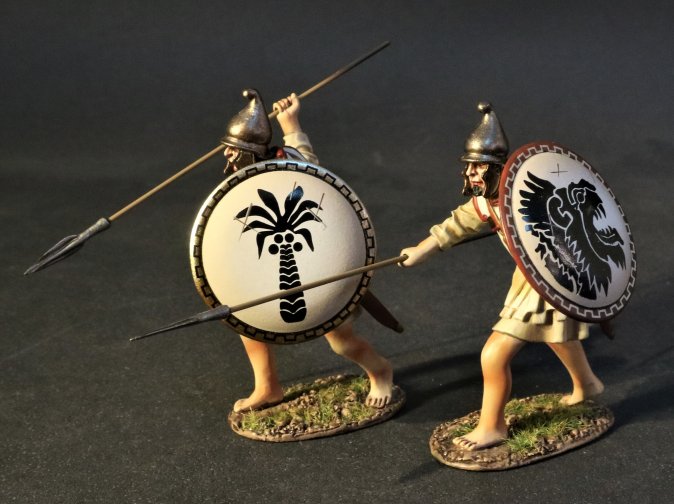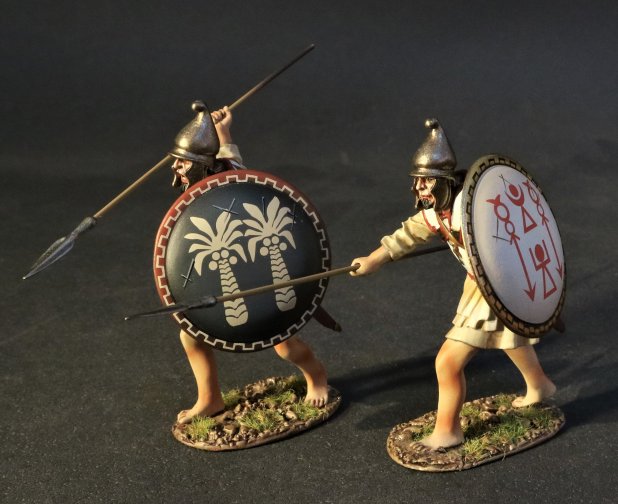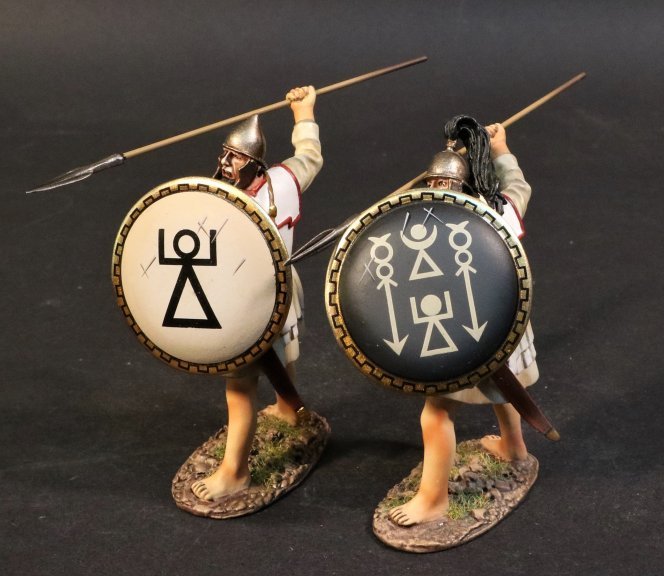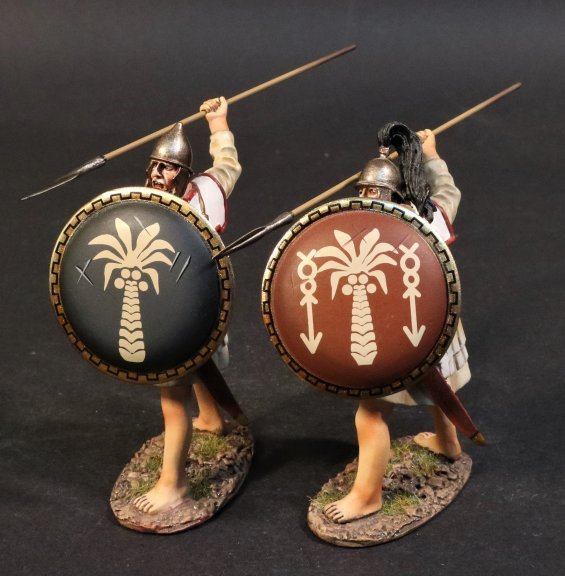- Joined
- Feb 2, 2011
- Messages
- 2,093
NEW RELEASES FOR OCTOBER 2021
THE ANCIENTS COLLECTION
ARMIES AND ENEMIES OF ANCIENT ROME
REPUBLICAN ROMANS
THE ROMAN ARMY OF THE MID REPUBLIC
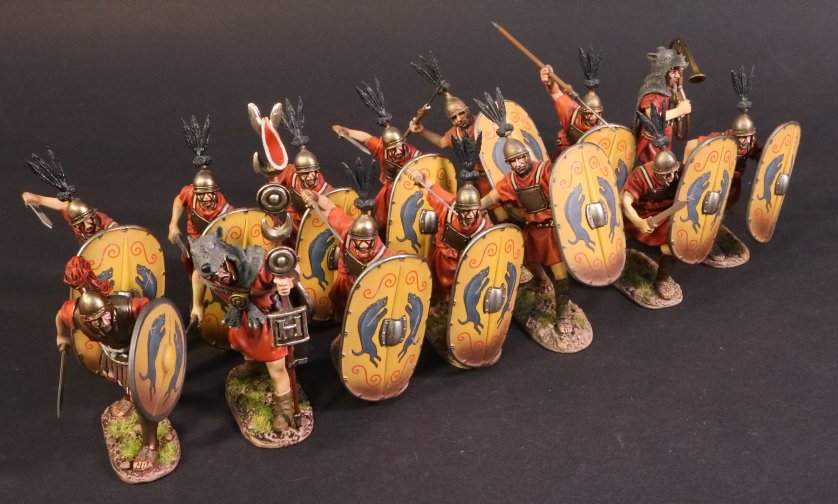
By the first decades of the 1st century, the COHORT had replaced the maniple as the standard tactical unit of the legions.
The three lines of the manipular legion were combined to form the cohort, which generally numbered about 480 to 500 men. Maniples and centuries continued to be used as military and administrative subdivisions for the cohort.
There were six centuries in a cohort, which were now all 80-men strong.
Each Centuria was commanded by a Centurion, and also included an Optio, a Signifer and a Cornicen.
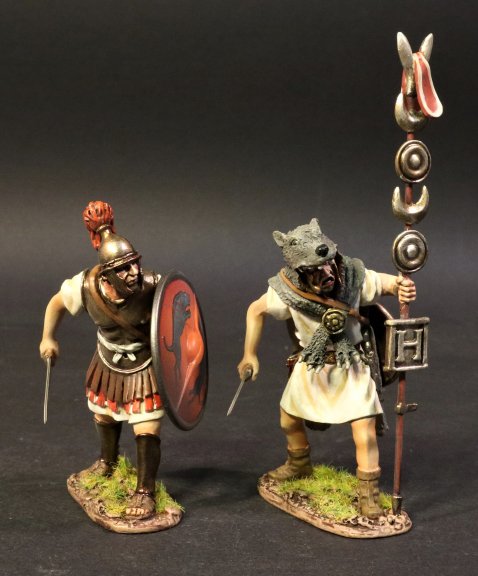
HMRR-01R
ARMIES AND ENEMIES OF ANCIENT ROME,
THE ROMAN ARMY OF THE MID REPUBLIC,
CENTURION AND SIGNIFER
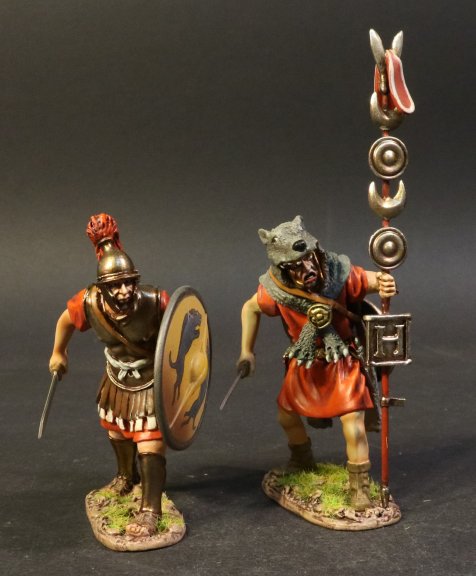
HMRR-01Y
ARMIES AND ENEMIES OF ANCIENT ROME,
THE ROMAN ARMY OF THE MID REPUBLIC,
CENTURION AND SIGNIFER
The Centurions also appointed the bravest men as standard bearers, or Signifers.
A signifer was a standard bearer of the Roman legions. He carried a signum (standard) for a cohort or century. Each century had a signifer so there were 59 in a legion. Within each cohort, the first century's signifer would be the senior one.
The signum that he carried was the military emblem of that unit. It had a number of phalarae (disks or medallions) along with a number of other elements mounted on a pole. The pole could be topped with a leaf-shaped spear head or later a manus (open human hand) image denoting the oath of loyalty taken by the soldiers. It sometimes included a representation of a wreath, probably denoting an honour or award.
The task of carrying the signum in battle was dangerous, as the soldier had to stand in the first rank and could carry only a small buckler. It was that banner that the men from each individual century would rally around. A soldier could also gain the position of discentes signiferorum, or standard bearer in training. If the signifer was lost in battle, the whole unit was dishonored.
In addition to carrying the signum, the signifer also assumed responsibility for the financial administration of the unit and functioned as the legionaries' banker. He was paid twice the basic wage.
ANCIENT GAULS
The Gauls were Celtic peoples inhabiting Gaul in the Iron Age and the Roman period (roughly from the 5th century BC to the 5th century AD).
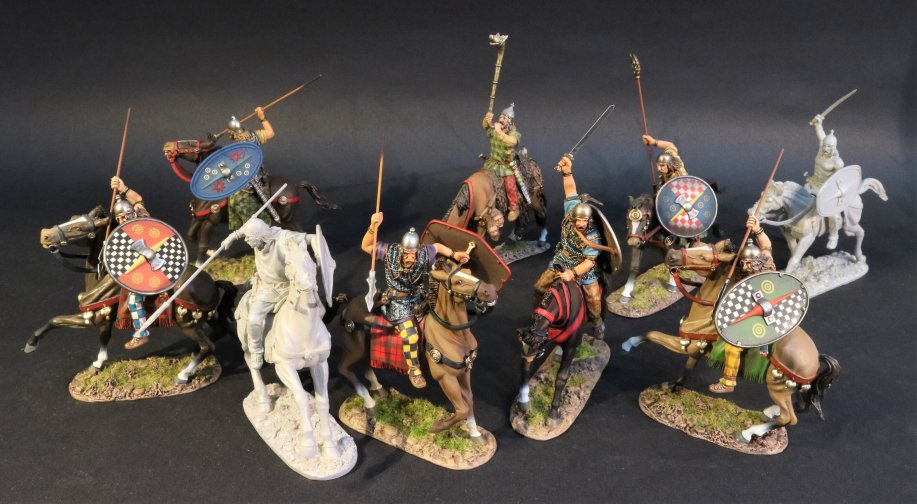
The Gauls emerged around the 5th century BC as the bearers of the La Tène culture north of the Alps (spread across the lands between the Seine, Middle Rhine and upper Elbe). By the 4th century BC, they spread over much of what is now France, Belgium, Switzerland, Southern Germany, Austria and the Czech Republic by virtue of controlling the trade routes along the river systems of the Rhône, Seine, Rhine, and Danube, and they quickly expanded into Northern Italy, the Balkans, Transylvania and Galatia. Gaul was never united under a single ruler or government, but the Gallic tribes were capable of uniting their forces in large-scale military operations. They reached the peak of their power in the early 3rd century BC. The rising Roman Republic after the end of the First Punic War increasingly put pressure on the Gallic sphere of influence; the Battle of Telamon of 225 BC heralded a gradual decline of Gallic power over the 2nd century, until the eventual conquest of Gaul in the Gallic Wars of the 50s BC. After this, Gaul became a province of the Roman Empire, and the Gauls were culturally assimilated into a Gallo-Roman culture, losing their tribal identities by the end of the 1st century AD.
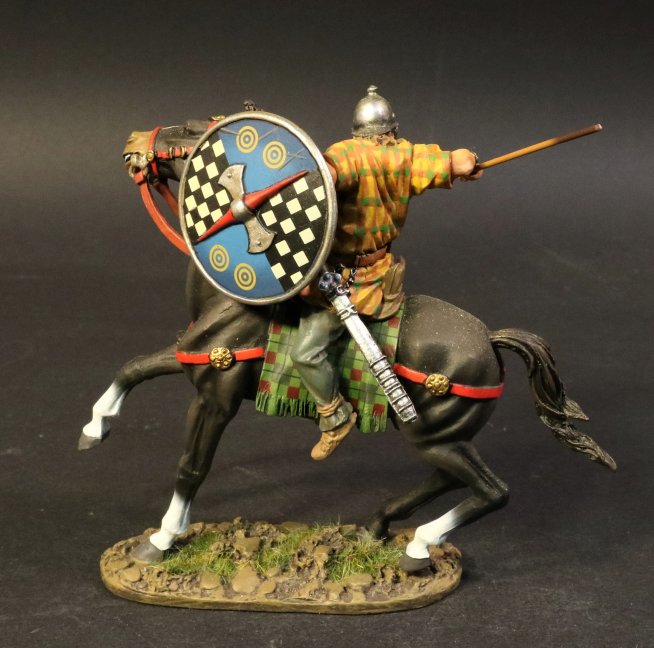
AERCAV-05A
ARMIES AND ENEMIES OF ANCIENT ROME,
ANCIENT GAULS,
GAUL CAVALRY
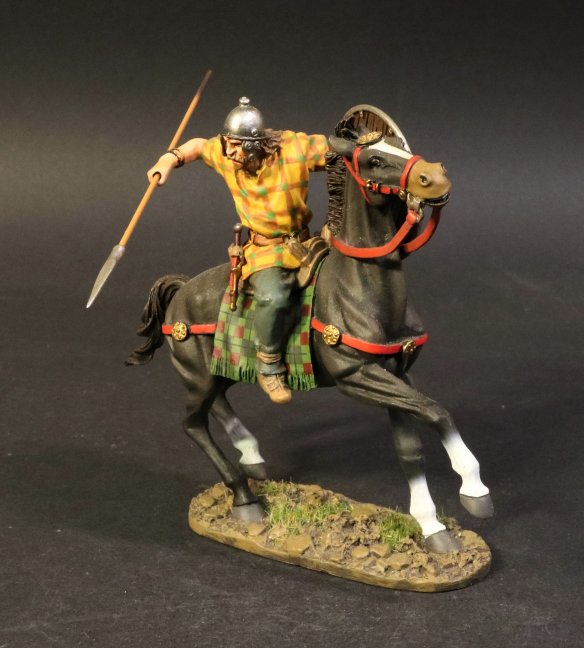
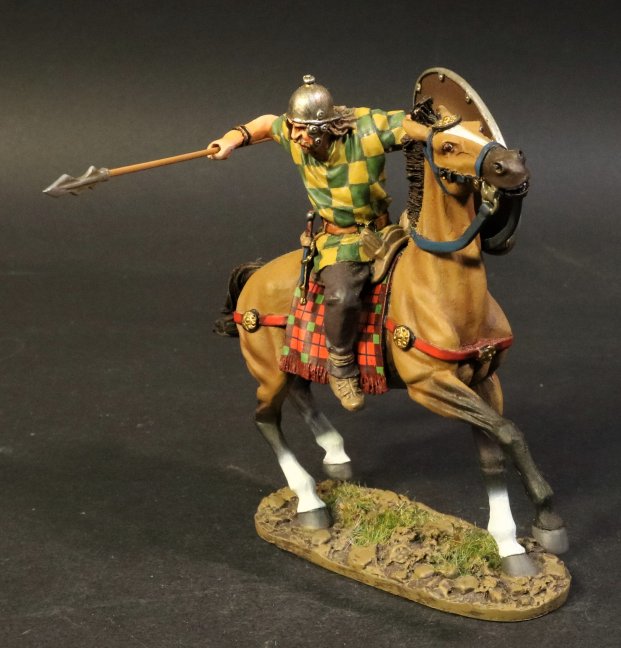
AERCAV-05B
ARMIES AND ENEMIES OF ANCIENT ROME,
ANCIENT GAULS,
GAUL CAVALRY
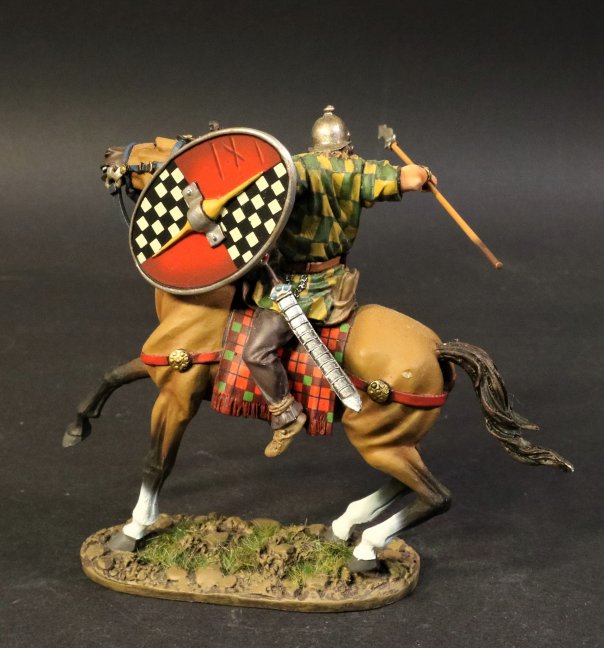
CARTHAGINIAN WARSHIP
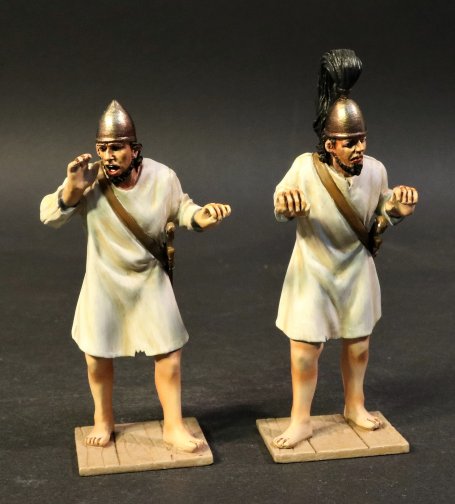
BTCT-02
ARMIES AND ENEMIES OF ANCIENT ROME,
THE CARTHAGINIANS,
STEERSMEN.
The military of Carthage was one of the largest military forces in the ancient world. Although the navy was always Carthage’s main force, the army acquired a key role in the spread of Carthaginian power.
With its Phoenician origins, Carthage already had a long history as a seafaring people. This was helped in that the navy was a permanently manned force, whilst the army would be enlisted only for a particular campaign and then demobilized.
Therefore it was easier to understand how the Carthaginian army was a Combined arms force, which comprised light and heavy infantry, skirmishers, light and heavy cavalry, as well as elephants.
The supreme command of the military was initially held by the civilian “Suffetes” until the third century. Thereafter, professional military generals were appointed directly by the Carthaginian Senate.
Whilst the navy was mainly manned by citizens, the army was composed almost exclusively of foreign mercenary units, particularly Libyans, Numidians, Iberians, Gauls and Greeks.
Only when the city of Carthage itself was threatened would citizens be conscripted into infantry service
THE ANCIENTS COLLECTION
ARMIES AND ENEMIES OF ANCIENT ROME
REPUBLICAN ROMANS
THE ROMAN ARMY OF THE MID REPUBLIC

By the first decades of the 1st century, the COHORT had replaced the maniple as the standard tactical unit of the legions.
The three lines of the manipular legion were combined to form the cohort, which generally numbered about 480 to 500 men. Maniples and centuries continued to be used as military and administrative subdivisions for the cohort.
There were six centuries in a cohort, which were now all 80-men strong.
Each Centuria was commanded by a Centurion, and also included an Optio, a Signifer and a Cornicen.

HMRR-01R
ARMIES AND ENEMIES OF ANCIENT ROME,
THE ROMAN ARMY OF THE MID REPUBLIC,
CENTURION AND SIGNIFER

HMRR-01Y
ARMIES AND ENEMIES OF ANCIENT ROME,
THE ROMAN ARMY OF THE MID REPUBLIC,
CENTURION AND SIGNIFER
The Centurions also appointed the bravest men as standard bearers, or Signifers.
A signifer was a standard bearer of the Roman legions. He carried a signum (standard) for a cohort or century. Each century had a signifer so there were 59 in a legion. Within each cohort, the first century's signifer would be the senior one.
The signum that he carried was the military emblem of that unit. It had a number of phalarae (disks or medallions) along with a number of other elements mounted on a pole. The pole could be topped with a leaf-shaped spear head or later a manus (open human hand) image denoting the oath of loyalty taken by the soldiers. It sometimes included a representation of a wreath, probably denoting an honour or award.
The task of carrying the signum in battle was dangerous, as the soldier had to stand in the first rank and could carry only a small buckler. It was that banner that the men from each individual century would rally around. A soldier could also gain the position of discentes signiferorum, or standard bearer in training. If the signifer was lost in battle, the whole unit was dishonored.
In addition to carrying the signum, the signifer also assumed responsibility for the financial administration of the unit and functioned as the legionaries' banker. He was paid twice the basic wage.
ANCIENT GAULS
The Gauls were Celtic peoples inhabiting Gaul in the Iron Age and the Roman period (roughly from the 5th century BC to the 5th century AD).

The Gauls emerged around the 5th century BC as the bearers of the La Tène culture north of the Alps (spread across the lands between the Seine, Middle Rhine and upper Elbe). By the 4th century BC, they spread over much of what is now France, Belgium, Switzerland, Southern Germany, Austria and the Czech Republic by virtue of controlling the trade routes along the river systems of the Rhône, Seine, Rhine, and Danube, and they quickly expanded into Northern Italy, the Balkans, Transylvania and Galatia. Gaul was never united under a single ruler or government, but the Gallic tribes were capable of uniting their forces in large-scale military operations. They reached the peak of their power in the early 3rd century BC. The rising Roman Republic after the end of the First Punic War increasingly put pressure on the Gallic sphere of influence; the Battle of Telamon of 225 BC heralded a gradual decline of Gallic power over the 2nd century, until the eventual conquest of Gaul in the Gallic Wars of the 50s BC. After this, Gaul became a province of the Roman Empire, and the Gauls were culturally assimilated into a Gallo-Roman culture, losing their tribal identities by the end of the 1st century AD.

AERCAV-05A
ARMIES AND ENEMIES OF ANCIENT ROME,
ANCIENT GAULS,
GAUL CAVALRY


AERCAV-05B
ARMIES AND ENEMIES OF ANCIENT ROME,
ANCIENT GAULS,
GAUL CAVALRY

CARTHAGINIAN WARSHIP

BTCT-02
ARMIES AND ENEMIES OF ANCIENT ROME,
THE CARTHAGINIANS,
STEERSMEN.
The military of Carthage was one of the largest military forces in the ancient world. Although the navy was always Carthage’s main force, the army acquired a key role in the spread of Carthaginian power.
With its Phoenician origins, Carthage already had a long history as a seafaring people. This was helped in that the navy was a permanently manned force, whilst the army would be enlisted only for a particular campaign and then demobilized.
Therefore it was easier to understand how the Carthaginian army was a Combined arms force, which comprised light and heavy infantry, skirmishers, light and heavy cavalry, as well as elephants.
The supreme command of the military was initially held by the civilian “Suffetes” until the third century. Thereafter, professional military generals were appointed directly by the Carthaginian Senate.
Whilst the navy was mainly manned by citizens, the army was composed almost exclusively of foreign mercenary units, particularly Libyans, Numidians, Iberians, Gauls and Greeks.
Only when the city of Carthage itself was threatened would citizens be conscripted into infantry service


